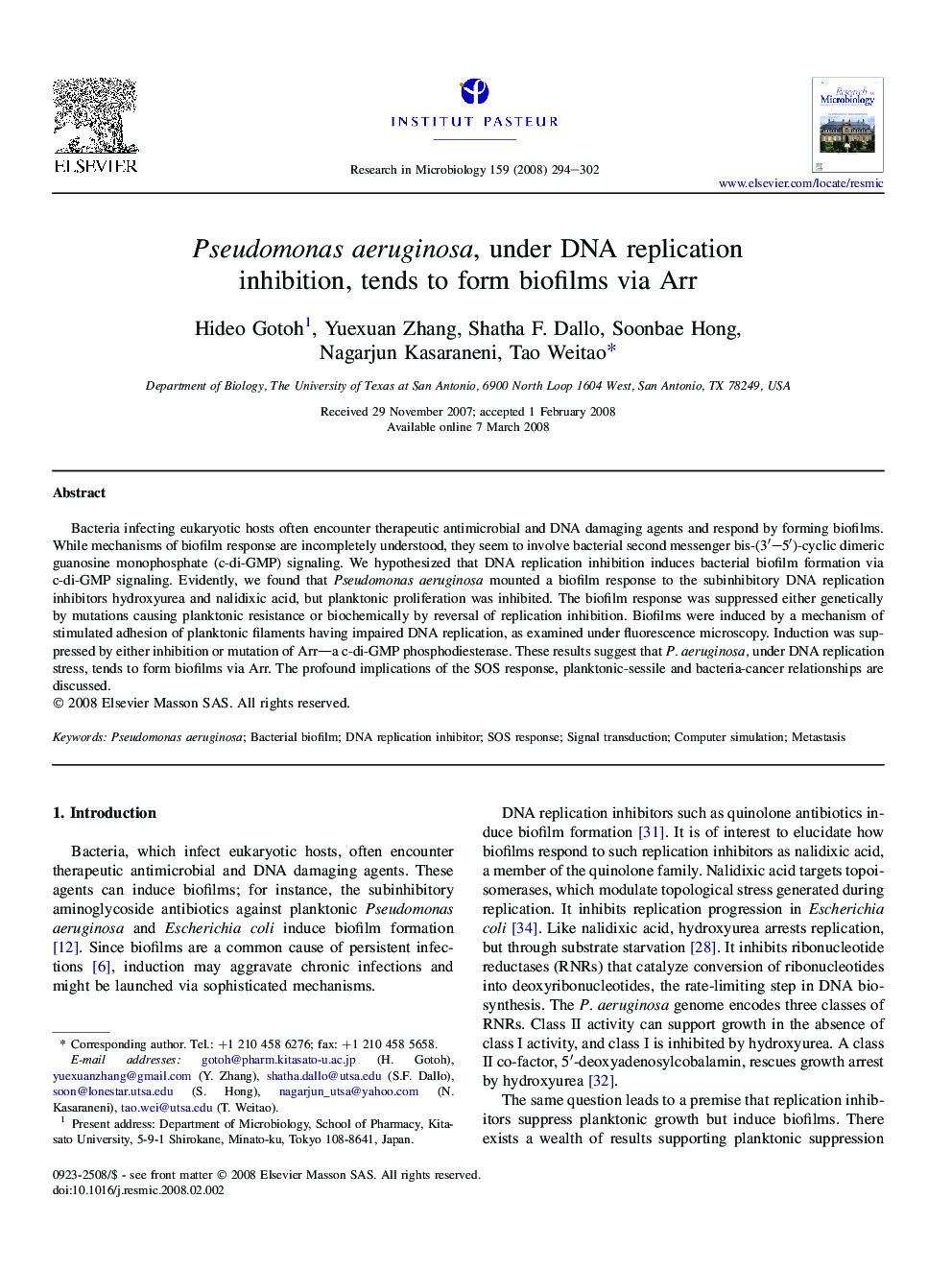| Article ID | Journal | Published Year | Pages | File Type |
|---|---|---|---|---|
| 4359544 | Research in Microbiology | 2008 | 9 Pages |
Bacteria infecting eukaryotic hosts often encounter therapeutic antimicrobial and DNA damaging agents and respond by forming biofilms. While mechanisms of biofilm response are incompletely understood, they seem to involve bacterial second messenger bis-(3′–5′)-cyclic dimeric guanosine monophosphate (c-di-GMP) signaling. We hypothesized that DNA replication inhibition induces bacterial biofilm formation via c-di-GMP signaling. Evidently, we found that Pseudomonas aeruginosa mounted a biofilm response to the subinhibitory DNA replication inhibitors hydroxyurea and nalidixic acid, but planktonic proliferation was inhibited. The biofilm response was suppressed either genetically by mutations causing planktonic resistance or biochemically by reversal of replication inhibition. Biofilms were induced by a mechanism of stimulated adhesion of planktonic filaments having impaired DNA replication, as examined under fluorescence microscopy. Induction was suppressed by either inhibition or mutation of Arr—a c-di-GMP phosphodiesterase. These results suggest that P. aeruginosa, under DNA replication stress, tends to form biofilms via Arr. The profound implications of the SOS response, planktonic-sessile and bacteria-cancer relationships are discussed.
